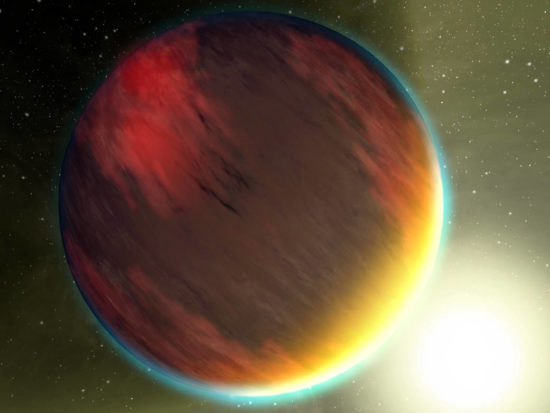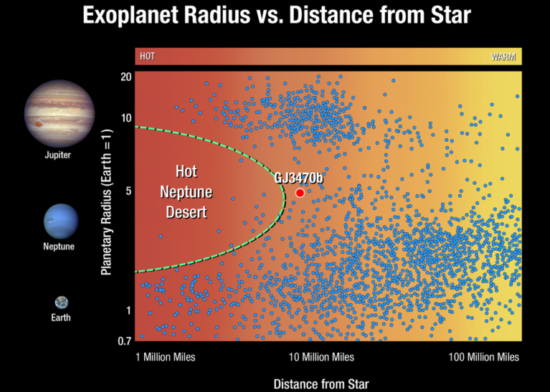
Photo NASA
The Hubble Space Telescope has found a Neptune-sized exoplanet, which is rapidly evaporating. The planet surface is heated to a record 815 degrees Celsius. Such exoplanets are called “Hot Neptunes” because they are similar in size to Neptune, however they are much hotter – up to 926 degrees Celsius.
Extremely high temperature makes the atmosphere of a “Hot Neptune” evaporate at a record speed. The distance from this exoplanet to its star is only approximately six million kilometers. In the vastness of space, this is a very small distance and the intense radiation of the star warms the atmosphere of the planet to the point where its atmosphere starts to leave despite gravity.
The evaporation process typically runs very quickly because of the low density of most “Hot Neptune” exoplanets.

Photo NASA
“This graphic plots exoplanets based on their size and distance from their star. Each dot represents an exoplanet. Planets the size of Jupiter (located at the top of the graphic) and planets the size of Earth and so-called super-Earths (at the bottom) are found both close to and far from their star,” NASA wrote. But planets the size of Neptune, in the middle of the plot, are very scarce close to their stars. This so-called desert of “Hot Neptunes” shows that such alien worlds are either rare or they were plentiful at one time, but have since disappeared.












